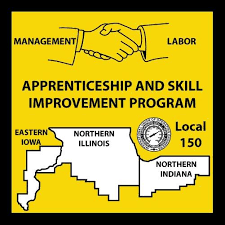Cranes and Derricks in Construction Final Rule
The U.S. Department of Labor’s Occupational Safety and Health Administration (OSHA) released a historic new standard, addressing the use of cranes and derricks in construction and replacing a decades old standard. The significant number of fatalities associated with the use of cranes and derricks in construction and the considerable technological advances in equipment since the publication of the old rule, issued in 1971, led the Labor Department to undertake this rulemaking.
In 1998, OSHA’s expert Advisory Committee on Construction Safety and Health (ACCSH) established a workgroup to develop recommended changes to the current standard for cranes and derricks. In December 1999, ACCSH recommended that the Agency use negotiated rulemaking to develop the rule. The Cranes and Derricks Negotiated Rulemaking Committee (C-DAC) was convened in July 2003 and reached consensus on its draft document in July 2004. In 2006, ACCSH recommended that OSHA use the C-DAC consensus document as a basis for OSHA’s proposed rule, which was published in 2008. Public hearings were held in March 2009, and the public comment period on those proceedings closed in June 2009.
- The rule becomes effective 90 days after August 9, 2010, the date the final rule was published in the Federal Register. Certain provisions have delayed effective dates ranging from 1 to 4 years.
- The final rule was published on August 9, 2010 by the Federal Register, and can be found at http://www.osha.gov/FedReg_osha_pdf/FED20100809.pdf.
- A copy of the regulatory text is available at: http://www.osha.gov/doc/cranesreg.pdf
- This new standard will comprehensively address key hazards related to cranes and derricks on construction worksites, including the four main causes of worker death and injury: electrocution, crushed by parts of the equipment, struck-by the equipment/load, and falls.
- Significant requirements in this new rule include: a pre-erection inspection of tower crane parts; use of synthetic slings in accordance with the manufacturer’s instructions during assembly/disassembly work; assessment of ground conditions; qualification or certification of crane operators; and procedures for working in the vicinity of power lines.
- This final standard is expected to prevent 22 fatalities and 175 non-fatal injuries each year.
- Several provisions have been modified from the proposed rule. For example:
- Employers must comply with local and state operator licensing requirements which meet the minimum criteria specified in § 1926.1427.
- Employers must pay for certification or qualification of their currently uncertified or unqualified operators.
- Written certification tests may be administered in any language understood by the operator candidate.
- When employers with employees qualified for power transmission and distribution are working in accordance with the power transmission and distribution standard (§ 1910.269), that employer will be considered in compliance with this final rule’s requirements for working around power lines.
- Employers must use a qualified rigger for rigging operations during assembly/disassembly.
- Employers must perform a pre-erection inspection of tower cranes.
- This final rule requires operators of most types of cranes to be qualified or certified under one of the options set forth in § 1926.1427. Employers have up to 4 years to ensure that their operators are qualified or certified, unless they are operating in a state or city that has operator requirements.
- If a city or state has its own licensing or certification program, OSHA mandates compliance with that city or state’s requirements only if they meet the minimum criteria set forth in this rule at § 1926.1427.
- The certification requirements in the final rule are designed to work in conjunction with state and local laws.
- This final rule clarifies that employers must pay for all training required by the final rule and for certification of equipment operators employed as of the effective date of the rule
- State Plans must issue job safety and health standards that are “at least as effective as” comparable federal standards within 6 months of federal issuance. State Plans also have the option to promulgate more stringent standards or standards covering hazards not addressed by federal standards.
- OSHA will have additional compliance assistance material available within the next month.
